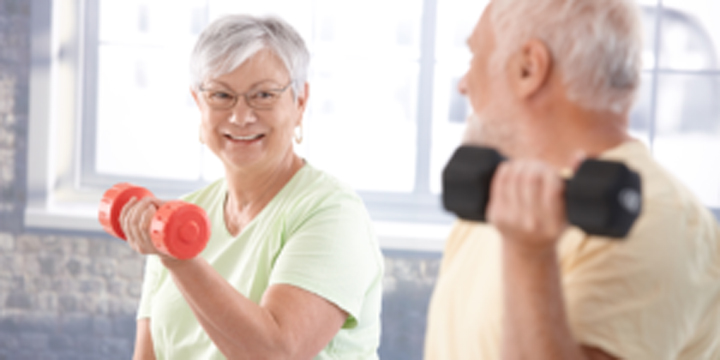According to a survey by National Osteoporosis Foundation (NOF)
- 24% of the population aged more than 50 years expires the year following their hip fracture
- 20% of those who were mobile before a hip fracture need long-term care
- One-third of people aged more than 65 have a fall each year and the fall risk increases with age
Elderly people are always at a higher risk of getting a fall and injuring their hip which becomes lethal when they are affected with osteoporosis.
What is osteoporosis?
Remodeling is the process of rebuilding of broken down old bones by the body. During growth years, the rate of building bones is greater than the breakdown. After a certain age, the process changes where production of new bones decelerates and the breakdown of older bones increases rapidly. This is the natural process of rebuilding bones. The condition becomes severe when the rate of breakdown of old bones with age is higher than normal. This condition is called osteoporosis.
Osteoporosis in elderly
Elderly people with osteoporosis may need:
- Acute care admissions
- Physiotherapy
- Long-term care
Seniors affected with osteoporosis have higher risk of mortality due to fractures because of fragile bones. Osteoporosis management involves betterment of bone health with the help of calcium; adequate nutrition and vitamin D supplements to increase bone mass and reduce retrograde micro-architecture of bones. Preventing falls is also very important for all those suffering from osteoporosis as they have fragile bones.
>Managing osteoporosis
Life does not come to a standstill if someone is affected with osteoporosis. If you think only you are the only one who has to go through the pain and suffering the above statistics may prove you wrong. Here are some precautions and advises to help manage and live well with osteoporosis.
Fall prevention
A fall can hamper your independence and affect your lifestyle resulting in social isolation and may sometimes disability if you are suffering from osteoporosis. It is therefore very important to identify and cease a fall before it happens. Those without osteoporosis are at 4 times lower risk of suffering a fracture than those with the bone condition. Only one-third of those who have undergone a surgery for an osteoporotic hip fracture manage to lead their normal life while the rest end up with one or other form of disability.
6 steps to prevent falls:
- Removing hazards to make the room fall-proof with the help of grab rails and anti-skit tiles
- Performing light strengthening exercises to improve balance
- Regular eye check up to ensure clear vision and wearing glare proof glasses
- Habit of wearing appropriate shoes that have non-skit soles and broad heels
- Proper nutrition
- Communicating with your personal physician whenever dizziness is noticed
Continued treatment
Regular treatment and supervision is necessary for seniors living with osteoporosis as it helps you be aware of your condition. It becomes easier to stay active and independent if you are not stressed and anxious because of your condition.
4 tips for staying on treatment
- Scheduling your pills: Taking pills regularly and at the same time of the day may help you stay consistent. You can also put a medicine reminder so that you do not forget to take the medication on the same time every day. Also keep note of the specific action while you take your pills and never forget to keep them in a place where you will remember.
- Change in plan: Always be ready with your medicines if you are travelling or there is a sudden change in your routine. If you are packing to leave for a holiday or an occasion, keep in mind to pack your medicines as a priority. If you are not confident, inform your family in advance to remind you about it.
- Family support: Talk to your family about your condition and how they need to cooperate with you to help you stay on medication. Ask them to remind you on a daily basis to check if you have had the pills on time. Family support plays a pivotal role in restoring normal life if you are suffering from any major physical condition. Be open to speak about it and share your feelings with someone you are close to.
- Medical advice: Share your physical problems and difficulties with your physician when you face them. Never delay in taking medical advice. Managing your pain or any other condition due to osteoporosis involves prompt action and communication apart from medication and exercises.
Proper diet
Bone health is closely related to proper diet and nutrition. A healthy diet can help you sustain good bone health. It can help you prevent osteoporosis and maintain necessary calcium and phosphorus levels in your bone to keep them in a healthy condition. It helps to prevent any kind of musculoskeletal disorders by helping in the production and maintenance of new bones. Improper diet may even lead to bone diseases by deteriorating bone health. Calcium and vitamin D are responsible for maintaining bone health.
Exercising with osteoporosis
Performing light weight bearing exercises or impact exercises assists in maintaining proper bone health. It helps to build stronger bones and reduce fragility. It also helps in deposition and building up of calcium levels. Exercise helps to prevent falls and fractures and maintain strong bones. It also speeds up rehabilitation process.
For further details, contact TriBeca Care
E-mail us at:enquiry@newwpsite.tribecacare.com or call us on +91 33 402 777 77
Reference:
http://www.nof.org/sites/default/files/pdfs/NOF_ClinicianGuide2009_v7.pdf
https://www.iofbonehealth.org/special-considerations-very-elderly

